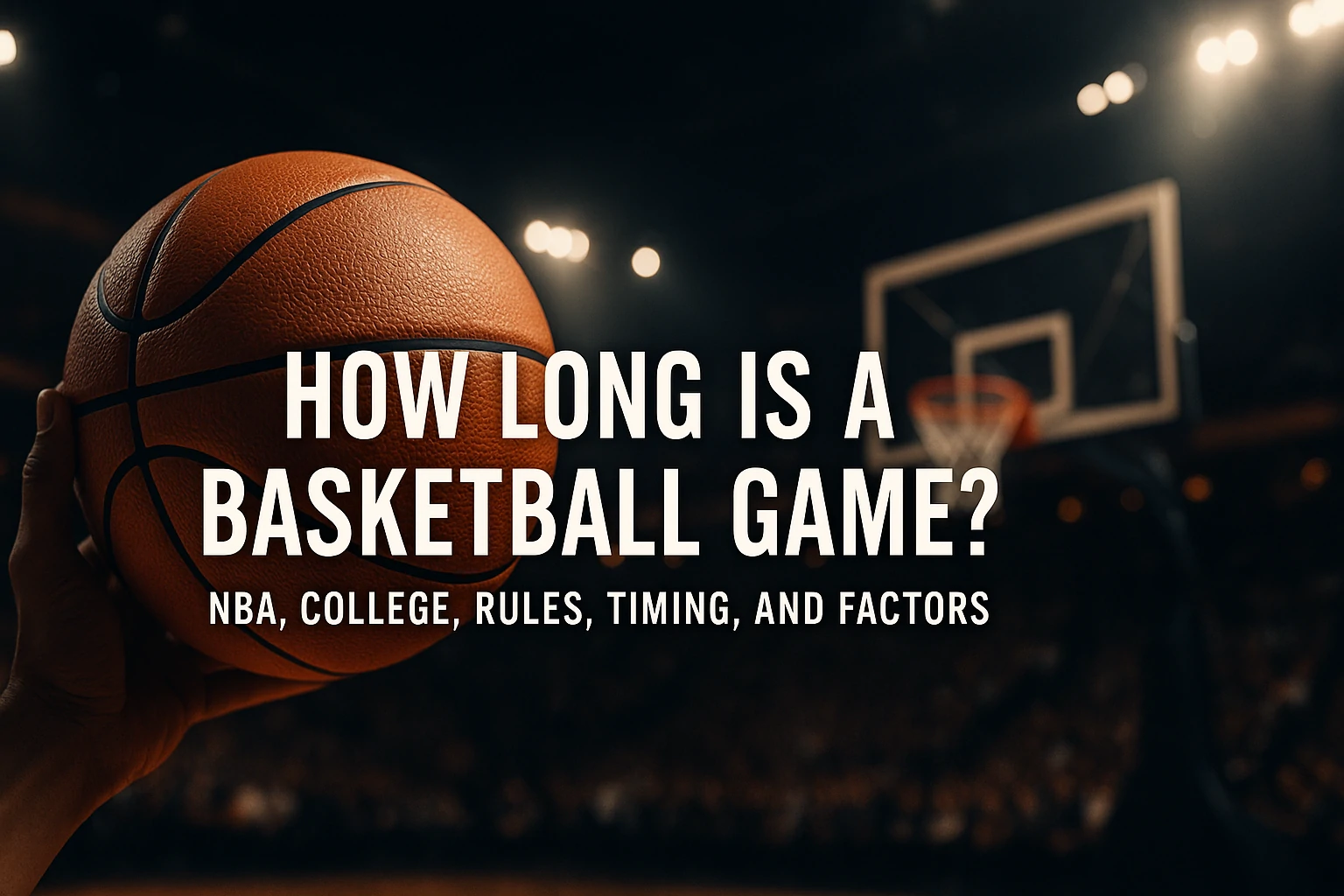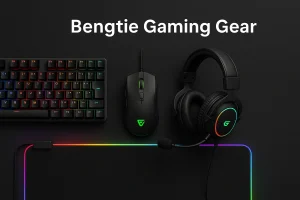Basketball moves fast. It brings action, energy, and fun. But one question comes up often. How long is a basketball game? The answer depends on many things. Each level of play follows its own rules. High school games are not the same as NBA games. College games also have their own structure.
Many fans think all games follow the same format. That is not true. Game length changes with timeouts, fouls, and how often the clock stops. Knowing this helps you plan better. You can enjoy the game without delay or confusion. This guide makes it simple.
You will learn how long games last in minutes. You will also see what slows them down. You will understand why TV games take longer. Whether you are a fan, player, or coach, this guide gives clear answers.
Let’s start at tip-off. We will go through each level and rule that affects the clock.
How Many Quarters Are in a Basketball Game?
Most basketball games use quarters, but not all use the same number or length. NBA and FIBA games use four quarters. College men’s games use two halves instead. Women’s college games return to the four-quarter format. High school and youth games also use quarters, but they are shorter.
This difference affects how the game feels and how long it takes. Quarters break the game into chunks, allowing more timeouts and momentum shifts. Halves offer longer play segments, which some coaches prefer. Understanding the format helps fans follow the pace better.
NBA Game Duration
NBA games run for 48 minutes. This breaks into four 12-minute quarters. But the game often lasts 2 to 2.5 hours in real time. The clock stops for fouls, reviews, and timeouts. Each team gets seven timeouts.
Halftime lasts 15 minutes. If the score is tied, overtime adds 5 more minutes. TV adds more time with ads and replays. Breaks between quarters and coach reviews also stretch the game.
College Basketball Game Duration
College games last 40 minutes. Men’s games use two 20-minute halves. Women’s games use four 10-minute quarters. Like the NBA, the clock stops often. Most games take about 2 hours to finish.
Each team has one 60-second timeout and four 30-second ones. Teams can carry unused timeouts to the second half. Overtime adds 5 minutes. College shot clocks last 30 seconds, longer than the NBA’s.
How to Play 2 Player Games: The Challenge PC 版の遊び方 (Full Guide)
High School Basketball Game Duration
Most high school games last 32 minutes. These games use four 8-minute quarters. Including timeouts and halftime, the total time is about 90 minutes. Some states follow different rules.
Halftime lasts about 10 minutes. Teams get five timeouts. Overtime runs for 4 minutes. The clock stops often, especially during tight games.
Middle School and Youth Game Length
Youth games are shorter. Middle school games run 24 to 28 minutes. They use four 6 or 7-minute quarters. Most games end in about one hour.
Many youth leagues use running clocks. That means fewer stops. The clock may only pause near the end of the game. The goal is to keep kids active and teach them the basics. Timeouts and breaks stay short.
International and Olympic Basketball (FIBA)
FIBA games last 40 minutes. They use four 10-minute quarters. This includes Olympic games. Their rules differ from U.S. leagues. Halftime lasts 15 minutes. The shot clock is 24 seconds.
Each team gets two timeouts in the first half and three in the second. But only two can happen in the last 2 minutes. Overtime adds 5 minutes. The game moves fast and has fewer breaks.
How Long Is a Timeout in Basketball?
Timeouts let teams pause the game, rest, or set plays. The NBA gives each team seven timeouts. Most last 75 seconds. In college, teams get one full timeout and four 30-second ones. Some TV broadcasts add media timeouts that stretch the total length.
High school teams usually get five timeouts, a mix of 30 and 60 seconds. Youth leagues may allow only a few timeouts to keep the game short. Timeout use, especially in the final minutes, often adds several extra minutes to the game.
Why Televised Games Take Longer
TV games stretch longer. Ads, reviews, and interviews slow things down. An NBA game on TV may last 3 hours. Even college games run over two hours.
TV networks pause the clock for ads and replays. Coach talks and halftime shows also take time. These extras turn games into longer shows.
Game Length vs. Real-Time Experience
Game clocks do not match real time. Extra time comes from warmups, anthems, and reviews. Players shoot free throws, and referees review plays.
Expect at least 1.5 hours for high school games. College takes 2 hours. NBA games stretch up to 3 hours. Playoffs may take more time.
Timeouts, Fouls, and Reviews
Timeouts slow the game. Coaches use them to plan plays. Fouls stop play and lead to free throws.
Officials also review calls. They check for fouls, violations, or clock issues. These reviews take time and add minutes to the game.
Overtime Rules and Extra Minutes
Tied games go into overtime. Most leagues add 5 minutes. High school adds 4. If still tied, more periods follow.
Some games go into double or triple overtime. These games last over 3 hours. Pressure builds with every extra minute.
Shot Clock and Possession Rules
The shot clock limits possession. NBA and FIBA use 24 seconds. College uses 30. Some high schools use 35. Others skip it.
Shorter shot clocks speed up games. Longer ones allow slow play. No shot clock may cause teams to stall.
Halftime and Break Periods
Halftime is a key break. NBA, FIBA, and college halftimes last 15 minutes. High school breaks last 10. Each quarter break adds about 2 minutes.
Breaks help players rest. Coaches use them to adjust. On TV, these breaks grow longer. Fans get time for food and rest.
How Does Halftime Work in Different Leagues?
Halftime length and structure vary. NBA and FIBA games give 15 minutes. College also follows this format. High school games usually have 10-minute halftimes. Youth halftimes may last only 5 to 7 minutes.
Halftime includes team talks, coach adjustments, and entertainment for fans. On TV, it also includes ads, expert commentary, and highlight reels. The timing stays fixed, but broadcasts often stretch it a bit.
Some fans try to find faster ways to watch online, but that can lead to risky sites. If you’re curious about those options, read this guide on Cracked Streams in 2025: Truth, Dangers, and Smarter Options.
Warm-Ups, National Anthems, and Pregame Events
Games start with warmups. Players spend 10 to 30 minutes on court. They shoot, stretch, and prepare.
Then comes the anthem. In big games, ceremonies add more time. Pregame events may last 45 minutes.
Delays and Unexpected Stops
Games may stop for injuries or equipment issues. Broken hoops or clock failures can delay the game.
Sometimes fans cause delays. Security may step in. These stops are rare but add time.
Tournaments, Playoffs, and Finals
Big games take longer. Coaches use more timeouts. Officials review more plays.
Finals include longer intros and ceremonies. Halftime shows also grow. Plan extra time when watching or attending.
Do Women’s Basketball Games Take Less Time?
Women’s games use the same game clock as men’s, but some formats differ. NCAA women’s games use four quarters instead of halves. The shot clock and timeout rules also vary slightly, but the overall game length stays similar.
The WNBA plays four 10-minute quarters, like FIBA and NCAA women. Real-time duration depends more on game pace, fouls, and TV coverage than gender. So, women’s games may sometimes feel quicker but follow nearly the same time structure.
Fastest and Longest Basketball Games in History
Not all games follow the average. Some break the norms. The shortest NBA games wrapped up in under 2 hours with few fouls and timeouts. In contrast, a 1951 NBA game between the Olympians and Royals went into six overtimes and lasted nearly four hours.
College basketball also had a seven-overtime game in 1981 between Cincinnati and Bradley. These rare games show how clock time and real time often differ, especially during high-stakes or close matchups.
Audience Type and Game Flow
Games for kids move faster. Short quarters and fewer fouls keep things simple. Referees let the game flow.
Pro games move slower. Strategy takes over. Some teams play fast. Others slow it down. The style changes how the game feels.
Basketball Game Length Comparison Table
Here is a quick look at how game timing compares across leagues:
| Level | Clock Time | Format | Timeout Type | OT Length | Total Time |
|---|---|---|---|---|---|
| NBA | 48 mins | 4 x 12-min quarters | 7 timeouts | 5 mins | 2.5–3 hours |
| NCAA Men | 40 mins | 2 x 20-min halves | 30s + 60s | 5 mins | ~2 hours |
| NCAA Women | 40 mins | 4 x 10-min quarters | Similar to men | 5 mins | ~2 hours |
| High School | 32 mins | 4 x 8-min quarters | 5 per team | 4 mins | ~1.5 hours |
| Youth League | 24–28 mins | 4 x 6–7-min quarters | 2–3 short timeouts | 2–4 mins | ~1 hour |
| FIBA/Olympic | 40 mins | 4 x 10-min quarters | 5 total per team | 5 mins | 2–2.5 hours |
In Summary: Time Expectations by Game Level
- NBA: 48 minutes, 2.5 to 3 hours
- College: 40 minutes, about 2 hours
- High School: 32 minutes, 1.5 to 2 hours
- Youth: 24 to 28 minutes, around 1 hour
- Olympic/FIBA: 40 minutes, 2 to 2.5 hours
Add time for breaks, reviews, and delays.
Conclusion
Basketball runs on the clock, but the experience lasts longer. NBA and college games stretch over two hours. High school and youth games are shorter but still have breaks, fouls, and stops. Each level plays by its own rules, and those rules affect how the game unfolds, both on the scoreboard and in real time.
If you want to attend or watch a game, knowing the average length helps you plan better. You avoid rushing, missing key moments, or underestimating how much time the full game event might take. From player warmups to final reviews, the action stretches far beyond the listed game time. Pregame events, halftime shows, timeouts, and possible overtime all extend the total experience.
Whether you’re new to basketball or a long-time fan, being aware of how long each type of game runs makes the sport more enjoyable. It allows you to watch with the right expectations. You can appreciate the strategy, the pacing, and the structure without confusion or delay.
From tip-off to the final buzzer, basketball brings excitement, intensity, and memorable moments. Now you know how long each level of play truly lasts. You understand why games don’t always end when the clock hits zero and why every second counts.
The game starts with the whistle. But the full story plays out over time-on the court, in the crowd, and in the moments that fans remember long after the buzzer sounds.
The way fans watch or follow games has changed in recent years. Some trends even cross over from the gaming world, like the rise of unique digital cultures. One example is explored in our piece on Gaymetu E in Gaming Culture: A New Era or Just a Phase?.
Frequently Asked Questions About Basketball Game Duration
| Question | Answer |
|---|---|
| How long does an NBA basketball game last in real time? | An NBA game usually lasts between 2.5 to 3 hours, including timeouts, halftime, and reviews. |
| Are college basketball games shorter than NBA games? | Yes, college games are shorter. They last about 2 hours, with 40 minutes of game clock time. |
| How long is a high school basketball game? | A high school game lasts 32 minutes on the clock but takes about 1.5 to 2 hours in real time. |
| What makes basketball games take longer on TV? | TV ads, replays, analysis, and extra halftime features stretch the game beyond clock time. |
| How long is each quarter in a basketball game? | NBA: 12 minutes; College Men: 20-minute halves; Others: 8–10 minute quarters, depending on level. |
| Do overtime periods have a set length? | Yes, most leagues use 5-minute overtime periods; high school games use 4-minute overtimes. |
Disclaimer: This post is for general sports information only. Game formats may vary by league or region. Always check official league rules or local guidelines for the most accurate and current details.




